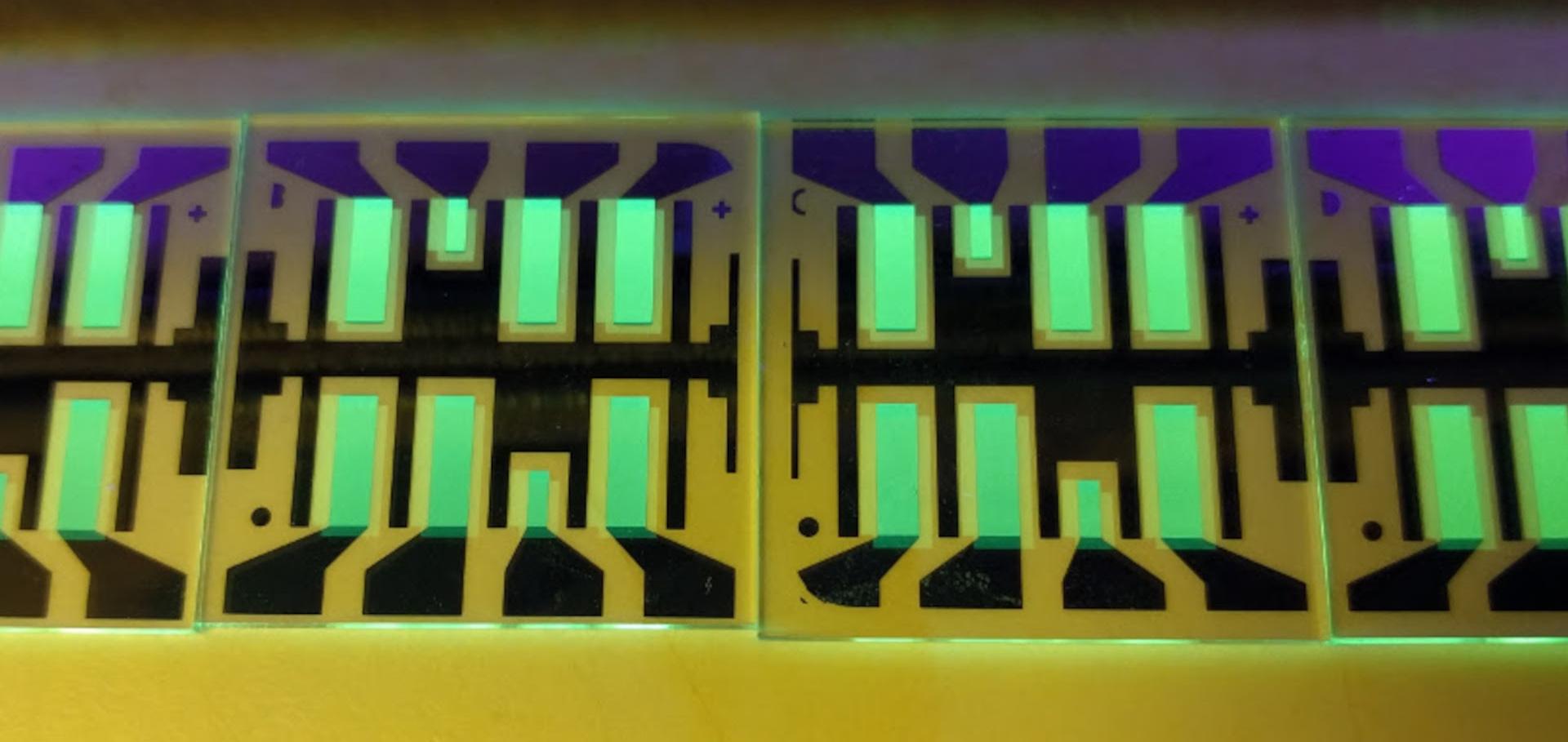Efficient p-i-n type organic solar cells incorporating 1,4,5,8- naphthalenetetracarboxylic dianhydride as transparent electron transport material
Journal of Applied Physics 104:3 (2008)
Abstract:
The implementation of proper charge carrier transport materials in p-i-n type organic solar cells strongly influences the device performance. Our investigation focuses on the substitution of the standard layer sequence used at the side of electron transport, usually consisting of either C60 /exciton blocking layer/metal or n -C60 /metal by a layer sequence including a window layer. Here, we evaluate the transparent electron transport material 1,4,5,8-naphthalenetetracarboxylic dianhydride (NTCDA), which guarantees a loss free charge extraction from the active materials due to a good energy level alignment as well as exciton blocking due to its wide bandgap. It is demonstrated that upon the exchange of the electron transport layer n -C60 for n -NTCDA, the solar power conversion efficiency of a p-i-n device can be increased by 10%. © 2008 American Institute of Physics.Recent progress in organic solar cells based on small molecules
Proceedings of SPIE - The International Society for Optical Engineering 7002 (2008)
Abstract:
We report on a series of organic solar cells based on heterojunetions of oligothiophene derivatives with varying chain length and C60 fullerenes. Devices arc based on cither p-i-n or p-i-i structure. In the first the intrinsic photovoltaic active layer is sandwiched between a p-typc and n-typc doped organic wide-gap layer for hole and electron transport respectively. In the latter the electron transport layer is replaced by a thin layer of wide-gap material as exciton blocker. Through optimization of transport and absorber layers we are able to reach in devices with single heterojunetions an open circuit voltage Voc of about 1V, a short circuit current density Jsc of about 5.6mA/cm2 and a fill factor FF above 50% under an AM1.5 illumination with 1000W/m2. However, still only a small part of the available solar spectrum is used. Thus, based on these materials stacked solar cells have been made to further improve the light absorption. The thickness of each layer is optimized using optical simulations to match the currents delivered by each of the solar cells in the stack. Through the incorporation of a very efficient recombination zone between the stacked solar cells the resulting Voc nearly reaches the sum of the V oc of the two serially connected solar cells.Transparent electrode materials for solar cells
Proceedings of SPIE - The International Society for Optical Engineering 7002 (2008)
Abstract:
Alternatives for replacing the expensive ITO are explored and Poly(ethylene dioxythiophene):polystyrene sulfonate (PEDOT:PSS) is introduced as one possibility. We present the first small-molecule organic solar cells employing only PEDOT:PSS as transparent electrode. Solar cells on glass and on flexible plastic foil were prepared, using a p-doped hole transporting material, zinc phthalocyanine (ZnPc) and C60 as donor-acceptor hctcrojunction, and an exciton blocking layer. Different methods to structure the PEDOT:PSS electrodes were investigated and are presented. As proof of principle, non-optimized prototype cells with efficiencies of over 0.7% on glass and 0.9% on flexible plastic foil substrate were obtained.1,4,5,8-naphthalenetetracarboxylic dianhydride as transparent electron transport material in organic p-i-n solar cells
Proceedings of SPIE - The International Society for Optical Engineering 6999 (2008)
Abstract:
The transparent electron transport material NTCDA (1,4,5,8- naphthalenetetracarboxylic dianhydride) was examined in order to find a suitable substitute for C60 which is today often used in small molecular organic solar cells as transport layer. Due to its wide band gap, NTCDA does not absorb in the visible range and is furthermore exciton blocking. By doping with AOB (acridine orange base), its conductivity was raised to about 1 · 10_4S/cm. It can therefore simultaneously be used as electron transport material and optical spacer in p-i-n type solar cells, leading to power conversion efficiencies of up to 2.83%. Additionally, an investigation of the surface morphology using AFM was performed.Characterisation of different hole transport materials as used in organic p-i-n solar cells
Proceedings of SPIE - The International Society for Optical Engineering 6999 (2008)


